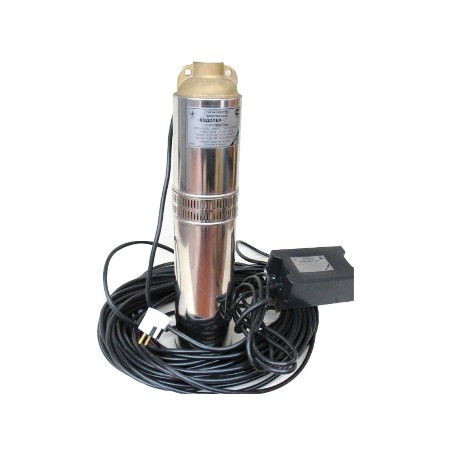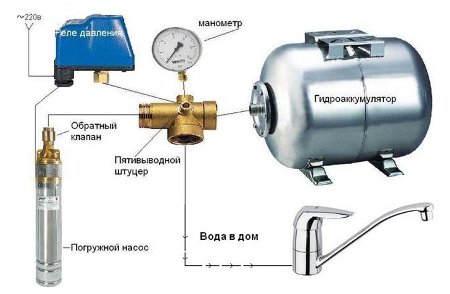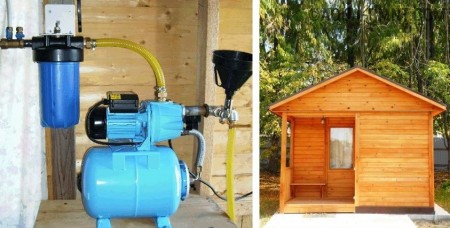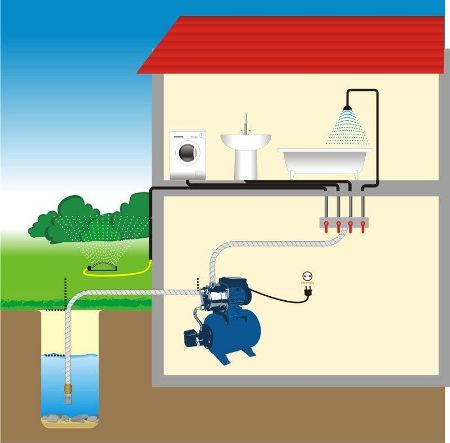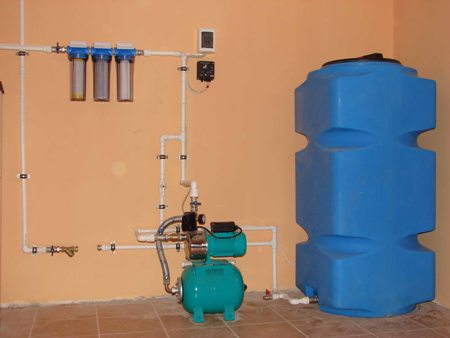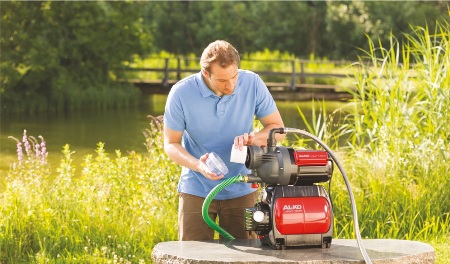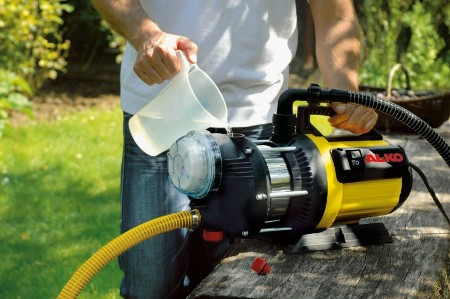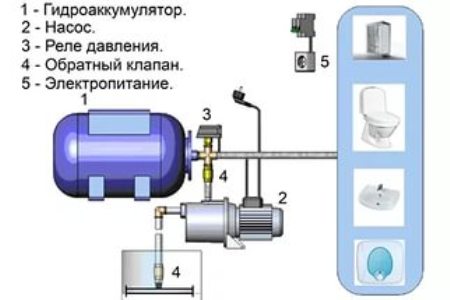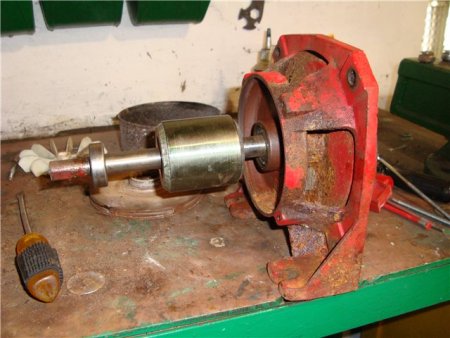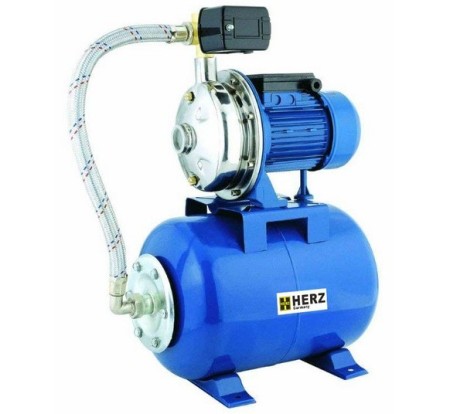The presence of water on the plot is a problem that almost all owners have. It often happens that the central water supply channel is too far from the territory allocated for private homes or villas. Using the well as the only source of water, the owner of the estate faces the following questions: with what equipment exactly does this process take place, how exactly does the water supply of the house and other premises (if necessary) be arranged? The most real solution to this problem is the water supply pumping stations for a private house. It is the pumping station for the water supply that will make it possible to obtain the required pressure in a particular water supply system and to obtain continuous supply of media to all points of installation of plumbing fixtures.
Content
Pumping station for a private house - the principles of choice
First of all, we need to understand why it is worth buying such an assembly, and not another. For comparison, let's imagine the situation: there is a well or well in the garden. As a consequence, there is a need to purchase equipment that will raise and supply water to the house.
Often, the choice falls on a pump designed to be dipped into a well.
The work of such a pump is as follows: every time the plumbing devices are put into an active state, it starts working, that is, it begins to pump water. Flowing through the pipes, the water eventually reaches the water intake points.
But quite often in the area remote from the city there are jumps of electrical voltage, which in turn leads to a malfunction of the pump or its complete shutdown.
A similar situation occurs with the pump when the water level in the well or borehole drops below a certain level. In such a situation, residents of a private home do not have the opportunity to fully use plumbing.
To ensure that life in a country house or dacha is as comfortable as possible, it is necessary to continuously supply water with different types of pumping stations, the only trouble-free way to solve the problem is to equip a pumping station that could supply water from a source, and in case of force majeure circumstances, use A stock from the storage tank, which must necessarily be built into such a system.
More details about uninterrupted water supply at home:
If the water supply from the source is stopped, the accumulator is connected to the water supply system, this is sufficient for using the plumbing devices that are available in the house.
It is also worth noting that such stations have a pump not intended for immersion in water. It is located on the surface and accordingly has a surface name. It is suitable for work in wells of small diameter. Transpatching liquid is carried out through an inch-hose immersed in the borehole.
How to choose a pumping station for a private house
First of all, choosing the same equipment, it is recommended to focus on these characteristics:
- height of water intake
- capacity of water storage tank
- performance
- power
In addition to the main characteristics, the important selection criteria are:
- maximum water level indicator
- materials from which the hydroaccumulator and the pump are made
- presence of fragments preventing overheating and protecting from dry cold
- machine control options: automatic, remote, manual.
Choosing an installation for the backyard takes into account the capacity of the unit, for a private farm it will be enough to be from 600 to 1500 watts. The calculation is based on the number of water intake points, the distance from the source to the house, the flow rate of the source. To determine the latter, a study is carried out giving information on the amount of water to which the well is replenished within a certain time.
The capacity of the station is directly related to the power. The criterion for its selection should be the production rate (the productivity of the equipment should be slightly less than the productivity of the well, this information can be found in the passport). It is also worth remembering the recommendations prescribed for the equipment, which emphasize the drilling companies in the accompanying documentation to the source.
In general, in order to continuously use water in your own home, it is enough to purchase a pump with a capacity of 3000 - 6000 liters per hour, for similar use in the country, it will be enough 0.6-1 m3 / hour.
The volume of the tank (in which the reserve part of the water accumulates) should be chosen based on the number of reserve liters required for uninterrupted supply in the event of a power outage or problems with water supply from the well.
Hydroaccumulators are made of different materials, steel cast iron, plastic. Each of the materials for production has different effects on the service life, strength and loudness of the unit.
The most budgetary versions of pumps are made of plastic. Their operational period is not very long. More expensive for the price - units with a cast-iron tank. The best pumping station for a private home is a variant with a steel container. This is the best option for the ratio of cost and quality. The presence in this installation of good protection from dry cold and overheating significantly increases its cost. But in the case of active use of water, such costs pay off fairly quickly.
The presence of the monitoring function will, if necessary, turn off the unit, in the absence of water in the system, and thus prevent the motor from breaking. In cases where the pump is running at an increased speed, the control system will also protect the unit from overheating by turning it off. The equipment of the pumping unit with such functions guarantees a long operating period in the private water supply system.
On the principle of operation of the pumping station:
More practical in the operation of an automated pumping station, in the case of emptying the tank to store water, it will ensure the inclusion of a liquid supply system, and after filling the tank - it will automatically shut down the system.
Owners of country houses, which they use not constantly, but seasonally, it makes no sense to purchase expensive equipment. There is no very bad alternative - the unit with manual control. In addition, if necessary, to draw water from a depth of less than 30 m, you can buy a station with an ejector.
More information on the video:
Pump station for a private house - malfunctions that occur most often
Unfortunately, no one, even the most perfect electrical equipment, can work without breakdowns or failures. The cause of breakdowns can be illiterate actions of people serving a pumping unit or failures of the device itself, a temporary lack of water in the source or voltage in the power grid.
Also, the cause of the disconnection of the pump may be a shaft lock, in order to verify the fact of the lock, you must disconnect the system from the power supply and try to turn the shaft by hand.
If the water does not flow when the pump is running, it is most likely that the air plugs formed inside the pump itself or on the suction side of the pipe are to blame. To solve the problem, it will be enough to unscrew the plug, which is located at the filling opening of the unit. Swinging the pump will remove air that has accumulated in it and in the suction pipe. As a preventive measure, the pipe and fittings should be inspected for leaks.
Then the pump is filled with water and is connected to the mains.
Among the common problems is the pump shutdown due to engine overheating.
Among the possible causes of overheating, it should be noted:
- fluctuation of mains voltage,
- blockage of the pump impeller,
- long-term stay of the device under the scorching sun rays or pumping hot water,
- the operation of the pump is dry.
Correct actions for troubleshooting this kind - disabling the device, creating a canopy over it (if the cause of overheating is the sun's rays), waiting for the cooling of the unit.
Frequent on-offs of the water supply system can occur for the following reasons:
- rupture of the membrane in the tank,
- insufficient pressure in the accumulator,
- it is also possible for the check valve to malfunction.
If the pump station can not collect and maintain the optimum operating pressure, it must be ensured that air does not enter the pipe, and also check the pressure in the relay, it may not be sufficient.
Incorrectly configured relays can also cause the water supply station to stop shutting down, in which case it will be necessary to set a lower pressure.
Simple malfunctions in the work can be attempted to eliminate by oneself, but if the cause of the breakdown is difficult to find out independently, it is better to turn to specialists for assistance, the repair in any case will have a lower cost than buying a new water supply unit.
Before you get a pumping station for a private house - study the feedback of users, they can be found on the network a lot, of course, you can not take each of them at face value, but the general statistics of claims about the operation of a particular pump model can cause failure from its choice, and vice versa, often occurring positive feedback on the forums and online stores will pay attention to units that are reliable in their work.
Another interesting material on the organization of water supply at home, watch the video:



